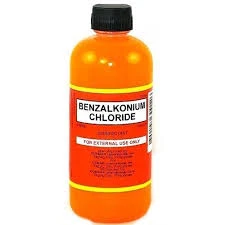Exploring the Benefits and Uses of Octyl Isothiazolinone in Various Industries
Understanding Octyl Isothiazolinone A Comprehensive Overview
Octyl isothiazolinone, often abbreviated as OIT, is a member of the isothiazolinone family, known for its efficacy as a biocide and preservative. This chemical compound plays a crucial role in various industries, including personal care, household products, and industrial applications. In this article, we will discover what octyl isothiazolinone is, its applications, safety considerations, and potential environmental impacts.
What is Octyl Isothiazolinone?
Octyl isothiazolinone is a synthetic compound derived from isothiazolinone, a class of organic compounds containing a six-membered ring with a nitrogen and a sulfur atom. As a biocide, OIT is effective against a broad spectrum of bacteria, fungi, and algae, making it an essential ingredient in products where microbial growth is a concern. Because of its potent antimicrobial properties, it is frequently utilized as a preservative in cosmetic formulations, paints, adhesives, and even in cooling water systems.
Applications of Octyl Isothiazolinone
The versatility of octyl isothiazolinone makes it suitable for various applications. In the personal care industry, it is commonly found in shampoos, conditioners, lotions, and other cosmetic products where it helps to extend shelf life by preventing microbial contamination. Similarly, in household cleaning products, it serves to maintain the effectiveness of these formulations over time.
In industrial applications, OIT is often incorporated into paints, coatings, and adhesives. Its ability to inhibit the growth of bacteria and fungi is vital in ensuring the longevity and performance of these products, especially in environments where exposure to moisture is prevalent. Additionally, in the paper and pulp industry, octyl isothiazolinone is utilized to deter microbial growth in processes that rely on water circulation.
Safety Considerations
octyl isothiazolinone

While octyl isothiazolinone is effective as a preservative and biocide, its safety profile has raised concerns among consumers and regulatory bodies. Studies have indicated potential skin sensitization and allergic reactions associated with its use, leading to a cautious approach in its application, particularly in leave-on cosmetics. Regulatory agencies in various regions have issued guidelines and restrictions on the concentration levels of OIT in consumer products to mitigate these risks.
In 2013, the European Commission classified isothiazolinones, including OIT, as skin sensitisers, prompting manufacturers to reconsider their formulations. Thus, consumers are increasingly seeking fragrance-free and preservative-free alternatives, leading to a shift in market dynamics as companies adjust to these preferences.
Environmental Concerns
Beyond human safety, the environmental impact of octyl isothiazolinone cannot be overlooked. As an eco-toxic substance, OIT has the potential to harm aquatic life, particularly in water systems where it may accumulate. Studies have shown that OIT can exhibit toxicity to various organisms, including fish and aquatic invertebrates. As regulations regarding chemical usage tighten, manufacturers are compelled to seek alternatives that provide similar efficacy without compromising environmental integrity.
Conclusion
Octyl isothiazolinone remains a powerful and effective biocide that has established a strong foothold across multiple industries. Its ability to prevent microbial growth ensures the stability and safety of numerous everyday products, from cosmetics to industrial materials. However, the safety concerns associated with its use highlight the necessity for ongoing research and regulation. As consumer awareness grows and environmental considerations come to the forefront, the industry must adapt to formulate products that meet safety guidelines without compromising performance.
In summary, understanding octyl isothiazolinone involves not only recognizing its effective applications but also being aware of the safety and environmental implications tied to its use. As science and consumer preferences evolve, the future of this compound in various industries will continue to be a point of discussion and development, paving the way for innovation in safe and effective formulations.
-
Water Treatment with Flocculant Water TreatmentNewsJun.12,2025
-
Polymaleic AnhydrideNewsJun.12,2025
-
Polyaspartic AcidNewsJun.12,2025
-
Enhance Industrial Processes with IsothiazolinonesNewsJun.12,2025
-
Enhance Industrial Processes with PBTCA SolutionsNewsJun.12,2025
-
Dodecyldimethylbenzylammonium Chloride SolutionsNewsJun.12,2025





